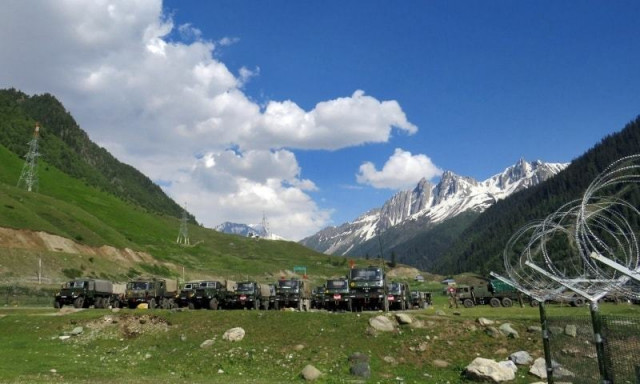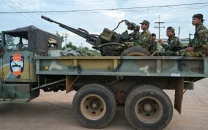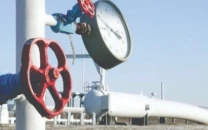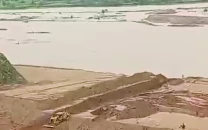India digs deep to boost defences on crucial China frontier
The showpiece is a $400-million tunnel in Himachal Pradesh state, providing an all-weather route for military convoys

A tunnel nearing completion in the Indian Himalayas will slash by hours the time it takes troops to reach the Chinese border, part of an infrastructure blitz by New Delhi that is gathering pace since a bloody border clash.
The nuclear-armed Asian giants blame each other for a brutal high-altitude battle in June that left 20 Indian soldiers dead and an unspecified number of Chinese casualties.
Both have sent massive troop reinforcements, but India has also stepped up its activities behind the frontlines — belatedly so, analysts say.
Its stepped-up infrastructure programme includes roads and bridges as well as high-altitude helipads and airstrips for civilian and military aircraft.
The showpiece is a $400-million tunnel in Himachal Pradesh state, providing an all-weather route for military convoys to avoid a 50-kilometre trudge through mountain passes that are snow-bound in winter and subject to frequent landslides.
From late this month, what used to be a four-hour, winding, high-altitude crossing will be cut to a 10-minute dash through the mountains in the state-of-the-art tunnel.
“There have been times on the pass route when vehicles have broken down, causing traffic jams of even six to eight hour,” said Lieutenant-General Harpal Singh, head of India's Border Roads Organisation (BRO).
“This tunnel and the other infrastructure plans change a lot for the troops,” he told AFP.
Engineering feat
Labourers are working overtime to get the tunnel ready before Prime Minister Narendra Modi is due to open it later this month.
Currently, essential items such as arms, ammunition and food have to be transported up in bulk before winter starts in an area where temperatures can plunge to minus 40 Celsius.
Constructed at an altitude of more than 3,000 metres and stretching nine kilometres, the Atal Rohtang tunnel is also a feat of engineering.
A decade in the making, freezing winter temperatures meant work could only take place from April to September. Workers wore special microchips to help locate them if they got trapped in an avalanche.
Still, India's efforts only belatedly mirror those of China, experts say.
“Earlier administrations wasted two decades,” said Harsh Pant, from the Observer Research Foundation think-tank in New Delhi.
“China, and its infrastructure, is much stronger today.”
Training the locals
Sanjay Kundu, the Himachal Pradesh police chief, has also proposed arming locals and training them to report possible Chinese spies and drone and helicopter sightings.
“Ultimately, whether it is at the border or the hinterland, people need to be trained and they need to be trained in defending themselves,” he told AFP.
The government hopes it will reassure worried villagers.
“In the last few weeks they've seen a lot more activity of fighter planes over the region,” said Lobsang Gyaltsen, an elected representative from a village around 30 kilometres from the border.
“They often wonder if China is attacking,” Gyaltsen told AFP.
Tanks
The BRO says it has built more strategic roads — most in the high-tension zone next to China — the last four years than in the previous decade and aims to complete 15 more key routes by the end of 2021.
Labourers are upgrading a recently-completed 250-kilometre stretch parallel to the Chinese frontier that cuts journey times from Ladakh's capital Leh from one week to less than a day.
Significantly, by next month all bridges along the route will be able to support the weight of a 70-tonne T-90 tank on a trailer, or a truck carrying a surface-to-air missile, according to press reports.
There are several strategic high-altitude tunnels as well as 125 bridges at different stages of planning in the states of Ladakh, Arunachal Pradesh, Himachal Pradesh and Sikkim bordering Tibet and Xinjiang.
Besides the strategic value, the improvements will also be life-changing for people who can be cut off from the rest of India for months in winter.
This will boost the local economy and attract more people to the sparsely populated area, and so make it less prone to cross-border incursions by the Chinese, the government hopes.



















COMMENTS
Comments are moderated and generally will be posted if they are on-topic and not abusive.
For more information, please see our Comments FAQ